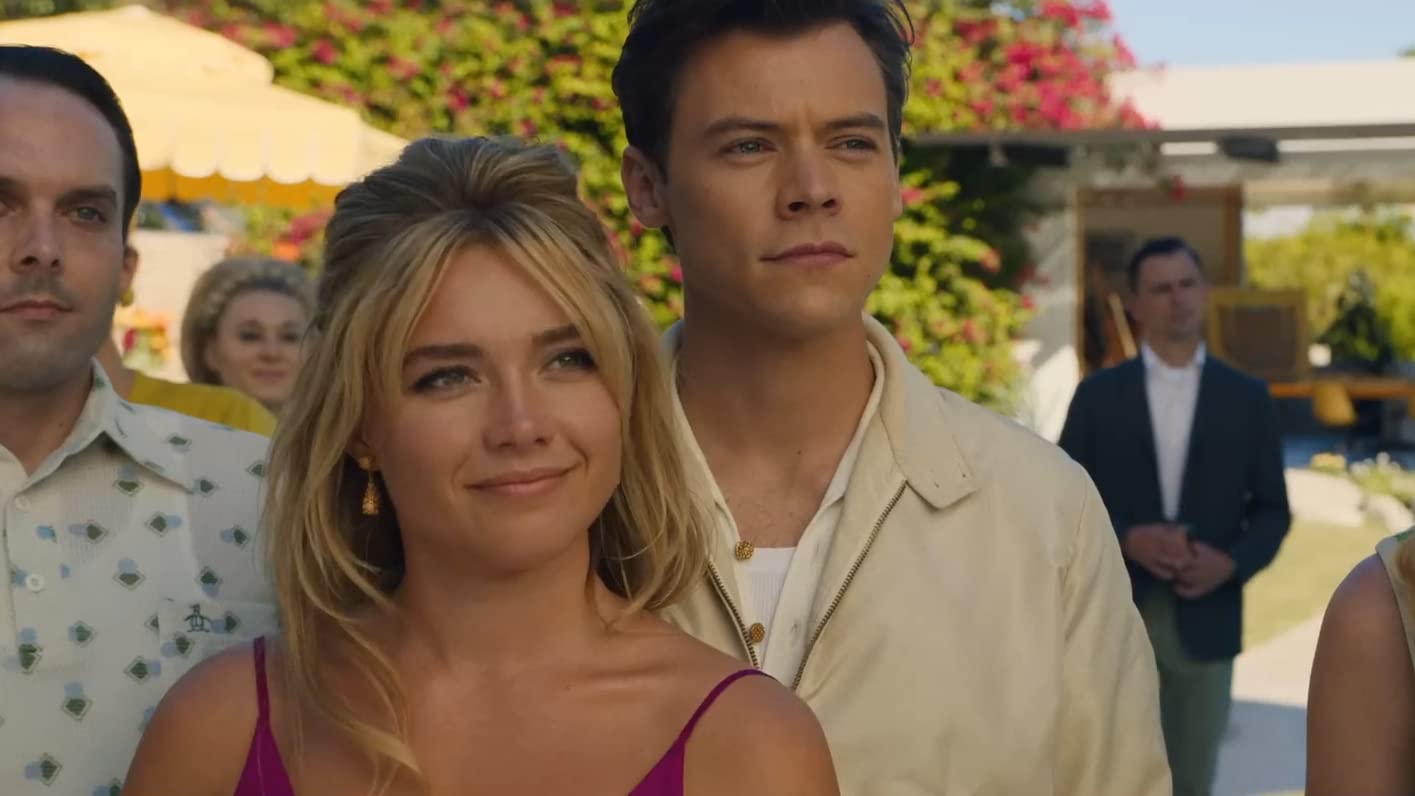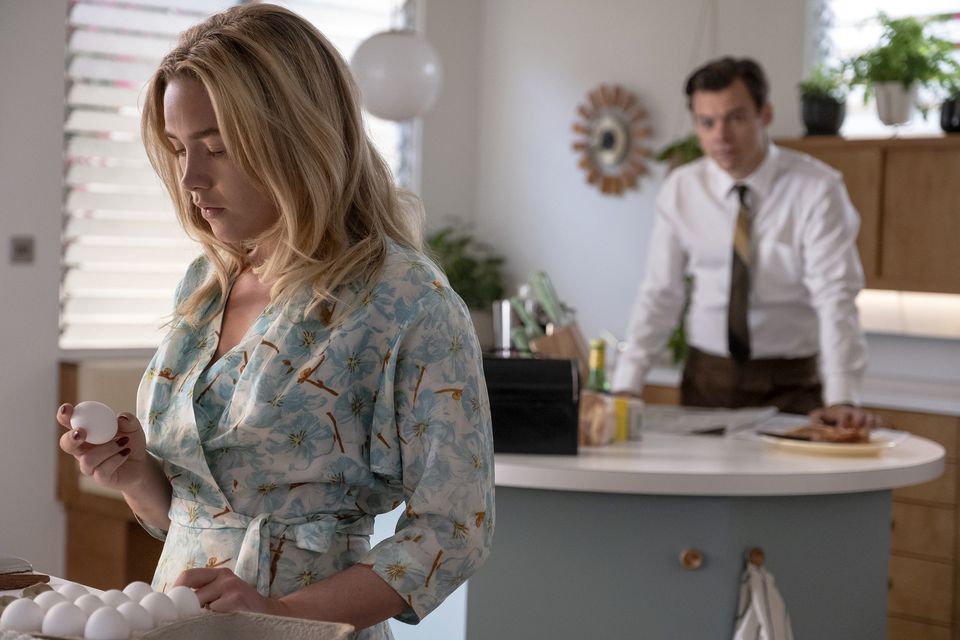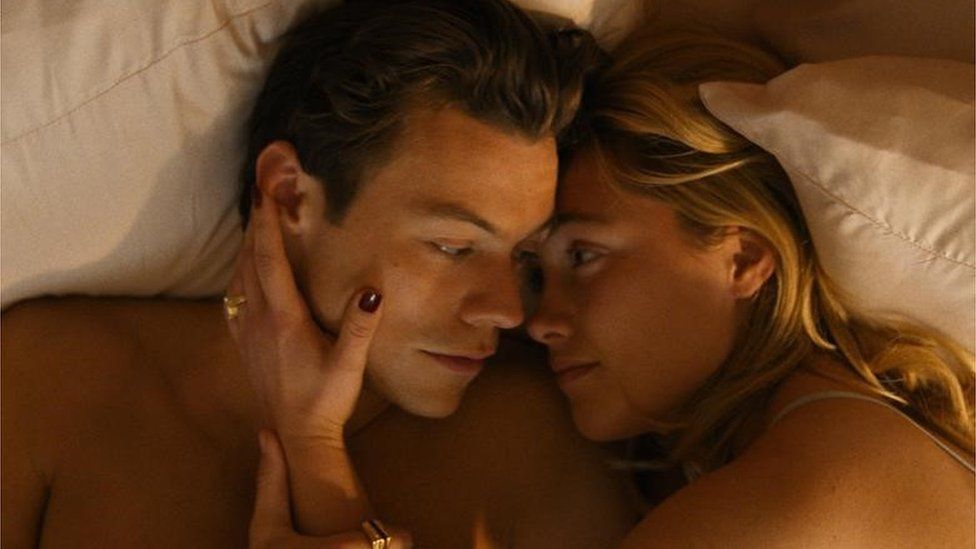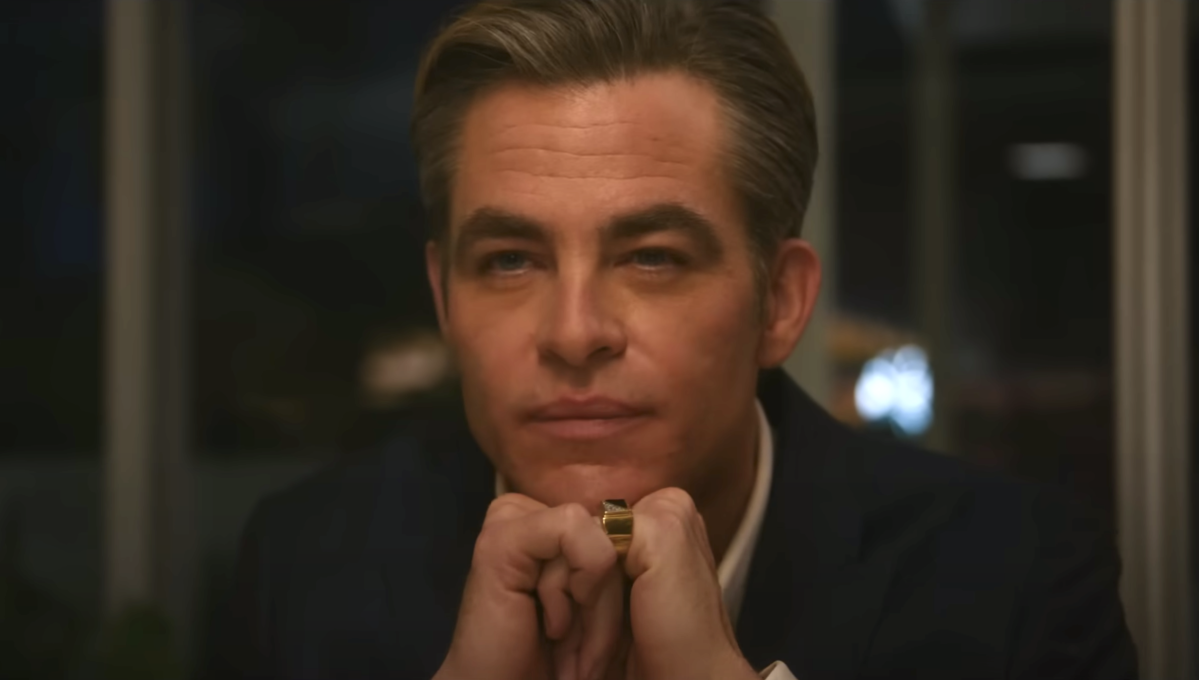Remember how the advanced word of mouth about Titanic and Mad Max: Fury Road was that they were going to be epic disasters – not disaster movies, but actual disasters? And then they weren’t? Well Olivia Wilde’s Don’t Worry Darling has come with more bad press than any film in recent memory. Even beforehand, casual citizens were acquainted with the fact that Wilde supposedly broke Jason Sudeikis’ heart, leading him to create the beloved Ted Lasso, and that pop music sensation Harry Styles, who stars in Don’t Worry, was the homewrecker who drove them apart. Then a whirlwind of different stories came out about the set of Don’t Worry Darling, including alleged screaming matches between Wilde and star Florence Pugh; a desperate, sweaty phone call by Wilde trying to bring Shia LaBeouf back to the set before he was replaced by Styles; then finally the most sensational story, which is that Styles spit on Don’t Worry co-star Chris Pine.
It was all worth it.
It’s dangerous to throw around the M word – masterpiece – but that word should be a new part of the extensive discourse regarding Don’t Worry Darling. There are two parts to assessing any film, which are what it says and how it says it. Regardless of what any person thinks about what this movie says, how it says it can’t be seen as anything but a gargantuan leap forward from the already confident work in Wilde’s directing debut, Booksmart. The sort of auteurish scenes in that film – I’m thinking of that swimming pool scene – couldn’t have possibly prepared us for the ways Wilde would develop her visual language in Don’t Worry Darling. This film is a feast of photography, editing, and especially production design in its 1950s setting, an imaginary version of a place kind of like Palm Springs. Throw in the nightmarish imagery of a woman whose world is falling apart and you have two plus hours of highly cinematic feature filmmaking.
Then there’s what the film is saying, which must be the major sticking point for the many Don’t Worry haters out there in the critical community – and there are many. To delve too extensively into the story and why it might or might not work is, unfortunately, to dive fully into spoiler territory, which we can’t do. But it’s probably obvious from the beguiling Don’t Worry Darling trailers that Wilde isn’t just making a Douglas Sirk style melodrama. This is a Darren Aronofsky style psychodrama.
Alice and Jack Chambers (Pugh and Styles) are the model examples of a husband wife in the model community of Victory, which is literally seen as a model of itself at one point. It’s a planned community that is the brainchild of Frank (Pine), nestled in the foothills of the mountains outside Palm Springs, though the location is never stated. All the men work for the mysterious Victory project – they can only tell their wives they are “developing progressive materials” – which entails a daily drive in their 1950s automobiles through a stretch of open desert, to reach the headquarters that are off limits to everyone else.
During the day, the women do household upkeep and drink lunchtime martinis with the other wives, who include the director as Bunny, Alice’s best friend and an extreme enforcer of the status quo. The drinking spills over into nighttime partying, which include Bunny’s husband Dean (Nick Kroll) and a variety of similar couples. Very occasionally they include Frank and his wife Shelley (Gemma Chen), though both turn the others into meek underlings – the women particularly cower at their daily ballet lessons with Shelley. Everyone here is loyal, everyone here doesn’t ask questions … except for one woman, Margaret (KiKi Layne), who is starting to crack after she and her son wandered off into the desert and he didn’t return. Those cracks will spread to Alice, and whatever’s going on here might put Alice and Jack in danger and threaten this whole idyllic lifestyle.
Like the aforementioned Darren Aronofsky’s mother!, what this film might be addressing can expand outward about as far as a viewer is inclined to take it. But it fundamentally stems from a relationship between partners – a man and a woman in this case, but any relationship will do. It’s about the conflict between what each partner believes they are supposed to bring to the partnership in order to support the other person and make them happy, even when it might involve overtly sinister tactics like gaslighting. If a gaslit person is happy, that’s all that matters, right? If you think you’re happy, aren’t you?
The thematic origins of this material may spring from Wilde’s relationship with Sudeikis, which has been talked about enough not to delve into it further here. But any relationship, even the happy ones, involves periodic feelings of imprisonment. We are imprisoned in our own choices, the decisions we made that prevented us from having any of the other lives we might have lived. Sometimes, the best version of our life presents as the worst during long periods of hardship and trial, before it finally gets to where it’s going. And even if it doesn’t get there, there’s a necessary autonomy in making these choices for ourselves and living with the consequences.
The 1950s created here are a lavish, opulent screen experience. Don’t Worry Darling is not the first film we’ve seen where wives wave goodbye to their husbands in picturesque cul-de-sacs, as their cars pull out of driveways in unison, creating a sort of geometric perfection. It’s not the first time we’ve seen wives with a vacuum cleaner in one hand and a martini in the other. This sort of commentary would seem banal offered up for the umpteenth time – we all know by now that suburban life is stultifying to the spirit, and unsustainable. Even if this were all Don’t Worry Darling was, it would be gorgeous to look at, with every piece of mid-century furniture perfectly in place. The film is a production designer’s wet dream, and Matthew Libatique’s cinematography just takes it all to another level. Then you’ve got the sinister score by John Powell, much of which relies on disembodied vocalisations, reminding us that this is all just a bit off.
This is not all Don’t Worry Darling is, though, and some of its most crucial elements are the very performers who were reportedly at each others’ throats. By now no one should be surprised about the frankly astonishing range that Florence Pugh has, but a real surprise is Styles, who proves himself more than a handsome face and a pop singer, and is eminently more useful here than Shia LaBeouf would have been. Pine is icy perfection, and Wilde reminds us that she was a real talent in front of the camera before she developed her gifts behind it.
So what to make of all the hate? It’ll take a wiser person than me to figure that out. Don’t Worry Darling confirms the arrival of multiple major talents. If Olivia Wilde had to live through long periods of hardship and trial in her own life, at least it produced this masterwork. (I’ll hedge my bets by going with “masterwork” rather than “masterpiece,” and let history decide.)
Don’t Worry Darling is currently playing in cinemas.



